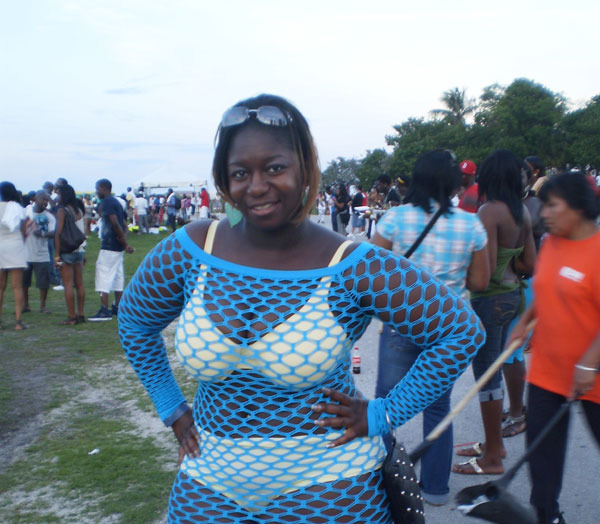
This year’s “Best of the Best concert” in Miami, Florida, took place at Bicentennial Park on Sunday, May 29th and included an impressive array of diverse reggae dancehall artists as well as some hip-hop and calypso performers. Some patrons were concerned that Jamaica’s recent wranglings with the United States over the extradition of alleged drug lord Christopher “Dudus” Coke and the subsequent visa revocation of some reggae superstars would diminish the quality of the event. However, concert organizers delivered South Florida an off-the-chain Memorial weekend concert!
I particularly enjoyed Mr. Vegas, Baby Cham, Machel Montano, Lady Saw, and the “Fire Man,” Capleton, whose performances were energetic, engaging and quite simply had me on my feet and moving! My standout performer for the night was Baby Cham, an artist whose talent and growing repertoire seems somewhat underrated.
Best of the Best’s hip-hop performances were headlined by megastar Puff Daddy. For me this was the least enjoyable part of the show. The words were unintelligible and the music unappealing, but I imagine some people say the same thing about reggae, which I love, so I’m willing to admit that my underwhelmed response may just be an issue of age (mine) and a lack of familiarity with the songs.
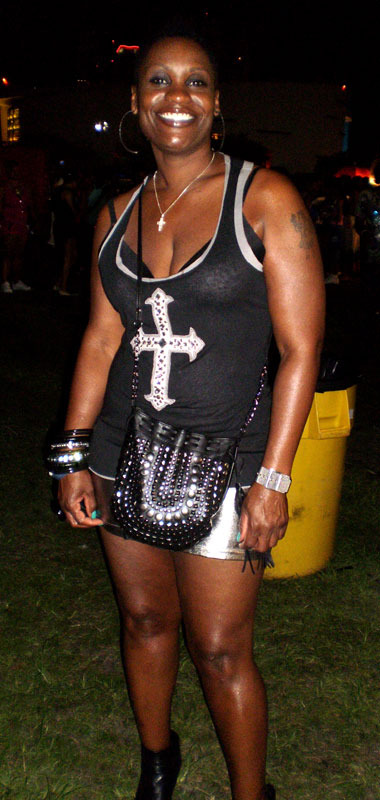
What I did, however, find quite intriguing, starting from when I hustled across Biscayne Boulevard to get to the park, was the spectacular range of fashion the female concert patrons had chosen to wear. Everything from lingerie that seemed too bare for even the bedroom to flowing gowns topped off with extravagant accessories turned downtown Miami into a scene from the movie Dancehall Queen. What is it, I wondered, that made so many women opt to festoon themselves in “traffic blocking” outfits? Why did this concert illicit such vibrant and unrestrained dress compared to say Jazz in the Gardens or the Shaggy and Sean Paul concerts which I had attended some months earlier? Answering this question became my quest for the evening and surprisingly, all the women I approached for an interview were quite willing to chat.
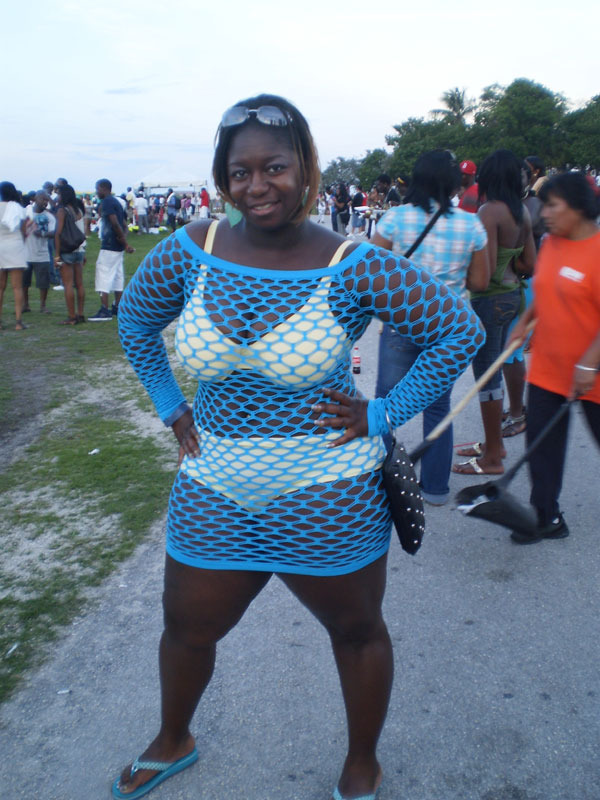
I first spoke with Michelle, an attractive full-figured woman who wore a yellow bikini under a blue mesh mini dress. The outfit was striking because of the bright colors as well as its seductive appeal, arising, I think, from the dress’s dual yet contradictory function as an agent of exposure and concealment, creating a sort of perpetual peek-a-boo.
I asked Michelle if the music she came to hear had inspired her outfit, and she explained that although she is not Jamaican, she loves dancehall and had dressed to match the “vibe” of the concert. I asked if she always possessed the type of confidence it took to wear an outfit such as hers. “The environment that I’m in brings the confidence to me,” Michelle elaborated, situating the music and the venue as integral to her fashion choice. She further explained that while she fancied sheer fabrics such as chiffons, she would “never” (with great emphasis) wear an ensemble like what she had on anywhere but a dancehall concert.
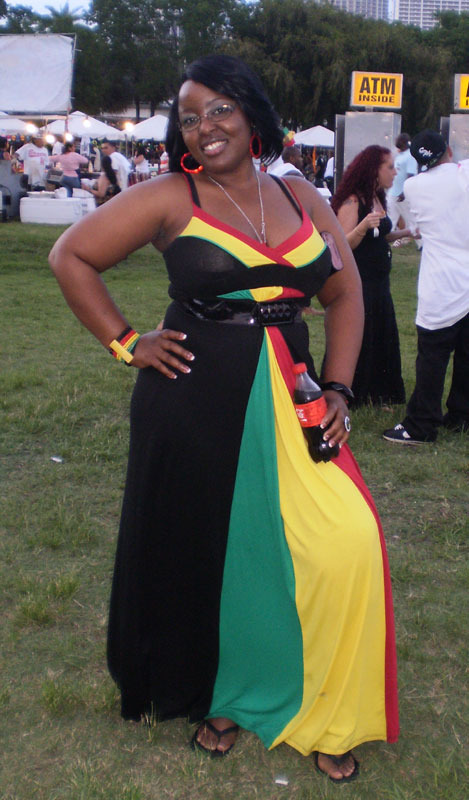
Next, I spoke with Betty, whose outfit was colorful and eye-catching, though one of the less revealing at the concert. She wore a floor-length sleeveless black dress inset with swaths of red, green and gold down the center. Betty’s outfit was also inspired by the event. She explained that her family was Haitian and she wore her dress as a representation of her Caribbean heritage—no doubt referring to the color combo of red, green and gold, popularized by Rastafarians. She said that at Best of the Best “We can be ourselves. We can express our culture.” I asked Betty if there were any performers in the reggae dancehall arena who were her fashion icons, and surprisingly she named Elephant Man! She said that she admired his taste in bright colors.
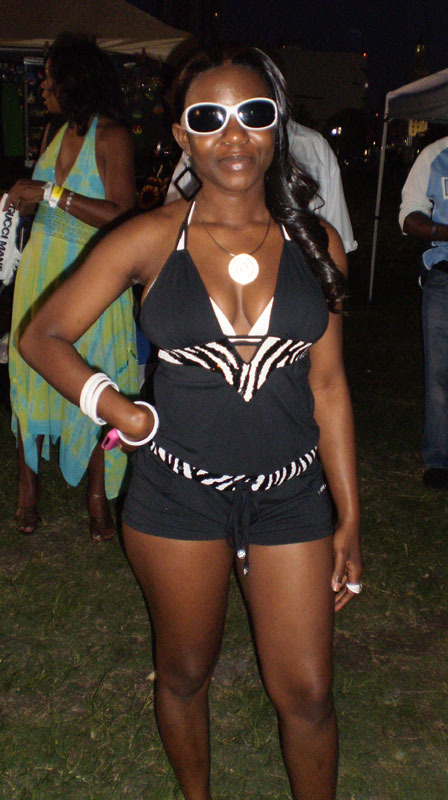
Tammy wore a black, form-fitting pair of capri-length tights and a tube top. Both were designed with a revealing lace-like network of strings along the side, which exposed her skin from her abdomen, down through her hips and thighs. She said she had never attended a Best of the Best concert before and was told to dress “cool” and “comfortable,” so that is what she did. She said she “knew” she could wear such an outfit, suggesting she was comfortable with her body. She further explained that she was particularly willing to wear her outfit because she was away from her home in the Bahamas. What would happen if you wore this at home, I asked. She said people would “stare [her] down” and think she had a “lot of nerve.” Tammy also confided that she also had the exact outfit in white!
As I prepared to find my last few interviewees, my photographer and friend, Joanna Johnson, made a significant observation: She noted that I had so far only selected somewhat voluptuous women with full figures like my own! Maybe I was subscribing to Western culture’s inclination to see large women as excessively sexualized, a bias about which I’ve written extensively. So I made sure that the last two women whom I selected to interview—Lunine and Nedra—were average-sized ladies.

Lunine wore a one-piece shorts jumpsuit, inlaid with a tiger print, and Nedra wore a simple but eye catching pewter mini skirt with a low-cut tank top. Both made very similar observations about their outfits, indicating that the performers and the music had a negligible impact on their choice of dress. They further suggested that they would have no problem wearing these at other venues. Lunine noted that although her figure allowed her to wear sheer and revealing outfits (perhaps she meant more revealing?) her boyfriend would not approve. She also mentioned that she sees a lot of “bigger” women “wearing certain things that they cannot get away with.” Nedra was also remarkably comfortable with herself and said that due to her “strong self esteem” she wore whatever she wanted in any setting.
The difference in the way the larger women with whom I spoke situate Best of the Best is unmistakable: They see it as an empowering and transformative space. A clear theme among Michelle, Betty, and Tammy is that the reggae dancehall arena is an escape—a venue where inhibitions that plague them in their everyday lives are laid to rest on Biscayne Boulevard until the concert’s end at midnight when a giant pumpkin turned carriage appears to whisk them back to their everyday lives. The concert offered them a safe space where they could for the most part “get away with it” and skirt, so to speak, some of the Western cultural beauty norms, which are temporarily relaxed or perhaps reconfigured in that space.
The concert also serves as a play space in which the audience can masquerade. These three ladies, like other Best of the Best patrons, spent the evening slipping between roles of audience and performer. While Lady Saw bellowed and Gyptian growled, these fairly mild-mannered women assumed spectacular identities for which they believed they would otherwise be censured.
For Michelle, Betty, and Tammy, Best of the Best 2010 was not only an opportunity to enjoy an astounding array of talent—to “dancehall rock” to Barrington Levy and lift “heads high” to Mr. Vegas. It was also a stage on which they could perform the risqué identities that they do not believe their worlds would readily embrace—that is when performed by their voluptuous bodies. Best of the Best, like some other reggae dancehall shows, was both a venue to view observe and be observed, with some degree of comfort. Michelle could pose off in her yellow bikini, Betty hold court in her red, green and gold regalia, and Tammy flaunt her curves, knowing no one is going to “stare her down.”
[1] A line from Althea and Donna’s 1970’s hit “Uptown Top Ranking”
About the Author:
Andrea Shaw, Ph.D., is assistant director of the Division of Humanities and an assistant professor of English at Nova Southeastern University in Ft. Lauderdale. She was born in Jamaica and is a creative writer and a scholar of Caribbean and African Diaspora studies. Her book, The Embodiment of Disobedience: Fat Black Women’s Unruly Political Bodies.






